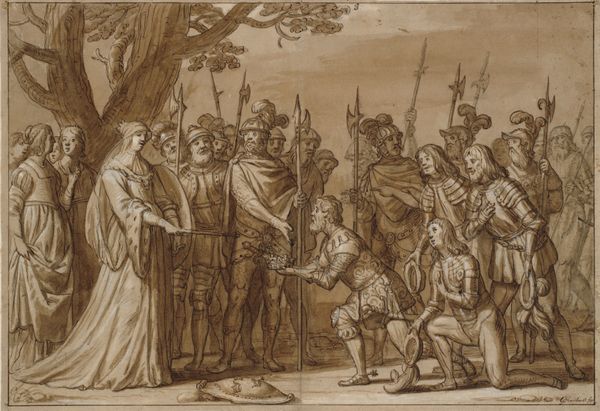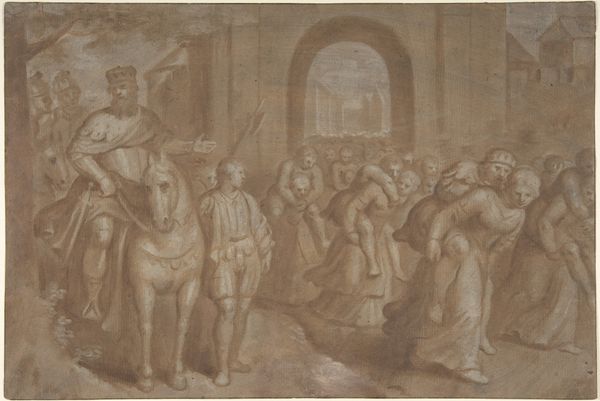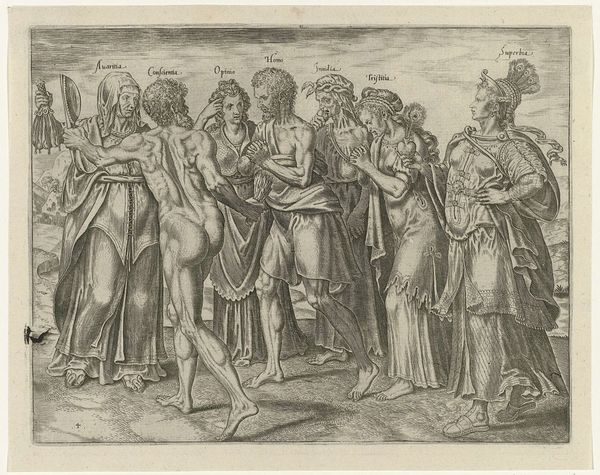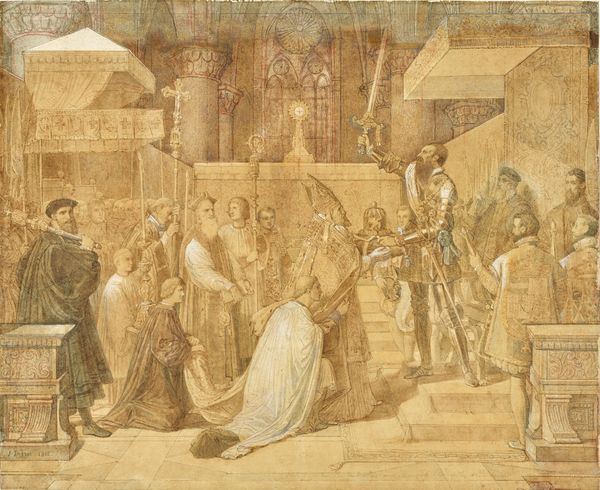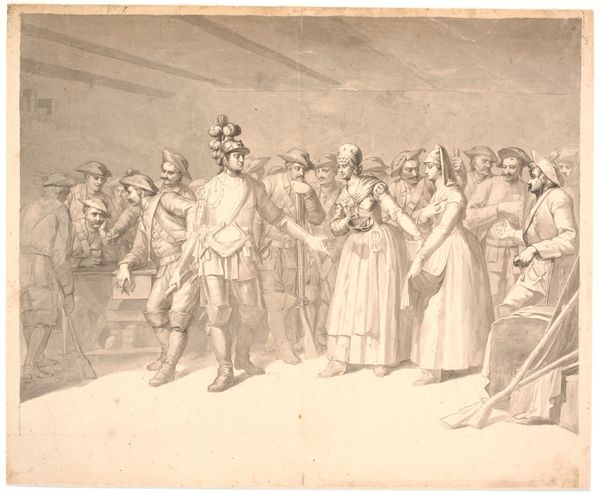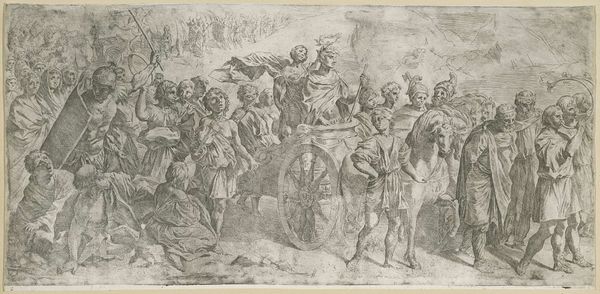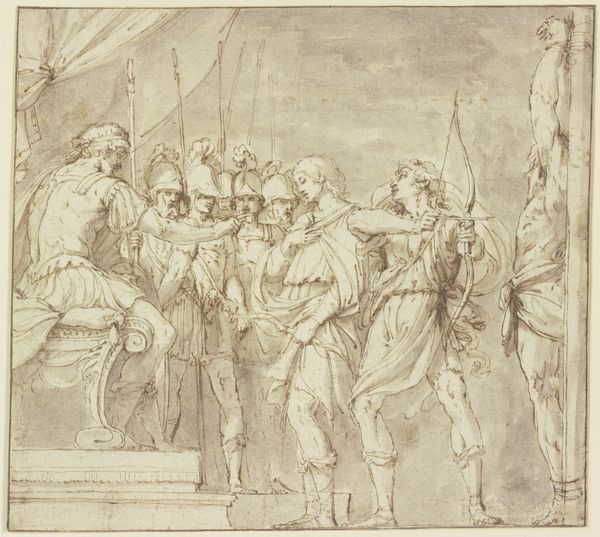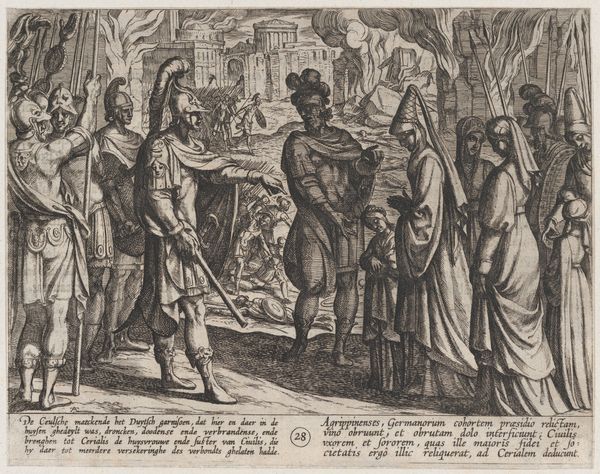
Dimensions: support: 245 x 295 mm
Copyright: NaN
Curator: This is William Blake's "The Penance of Jane Shore in St Paul’s Church," currently held at the Tate. Editor: The muted palette really amplifies the somber mood—the composition seems to trap Jane in this procession of stern faces and spears. Curator: Indeed. Blake illustrates Jane Shore's very public humiliation, a mistress of Edward IV forced to do penance for her perceived sins against the patriarchy. Editor: It’s interesting how Blake uses the lines of the spears to create a visual cage, directing our eyes to Jane’s downcast expression. The tonal variations add to that sense of confinement. Curator: And Blake, a radical thinker, used his art to critique such injustices, holding a mirror to society's treatment of women like Shore. Editor: Looking at the materials and seeing these subdued tones, I feel a sense of empathy—Blake’s artistic rendering elevates a historical figure into a sympathetic subject. Curator: It’s a potent reminder of how art can challenge the status quo and spark important conversations. Editor: Absolutely, this analysis really deepens my appreciation for the artwork.
Comments
tate 8 months ago
⋮
http://www.tate.org.uk/art/artworks/blake-the-penance-of-jane-shore-in-st-pauls-church-n05898
Join the conversation
Join millions of artists and users on Artera today and experience the ultimate creative platform.
tate 8 months ago
⋮
Jane Shore was a mistress of King Edward IV. After his death in 1483 she was accused of being a harlot and condemned to do public penance in St Paul’s Cathedral. The ‘golden glow’ of this watercolour comes from a very thick, now-yellowed glue layer that was almost certainly applied as a varnish by Blake. He varnished his temperas in a similar way. Once it had yellowed someone else added a picture varnish on top. This also went yellow but has since been removed. The subtle colouring of Blake’s painting is suppressed by the glue varnish. Gallery label, September 2004
